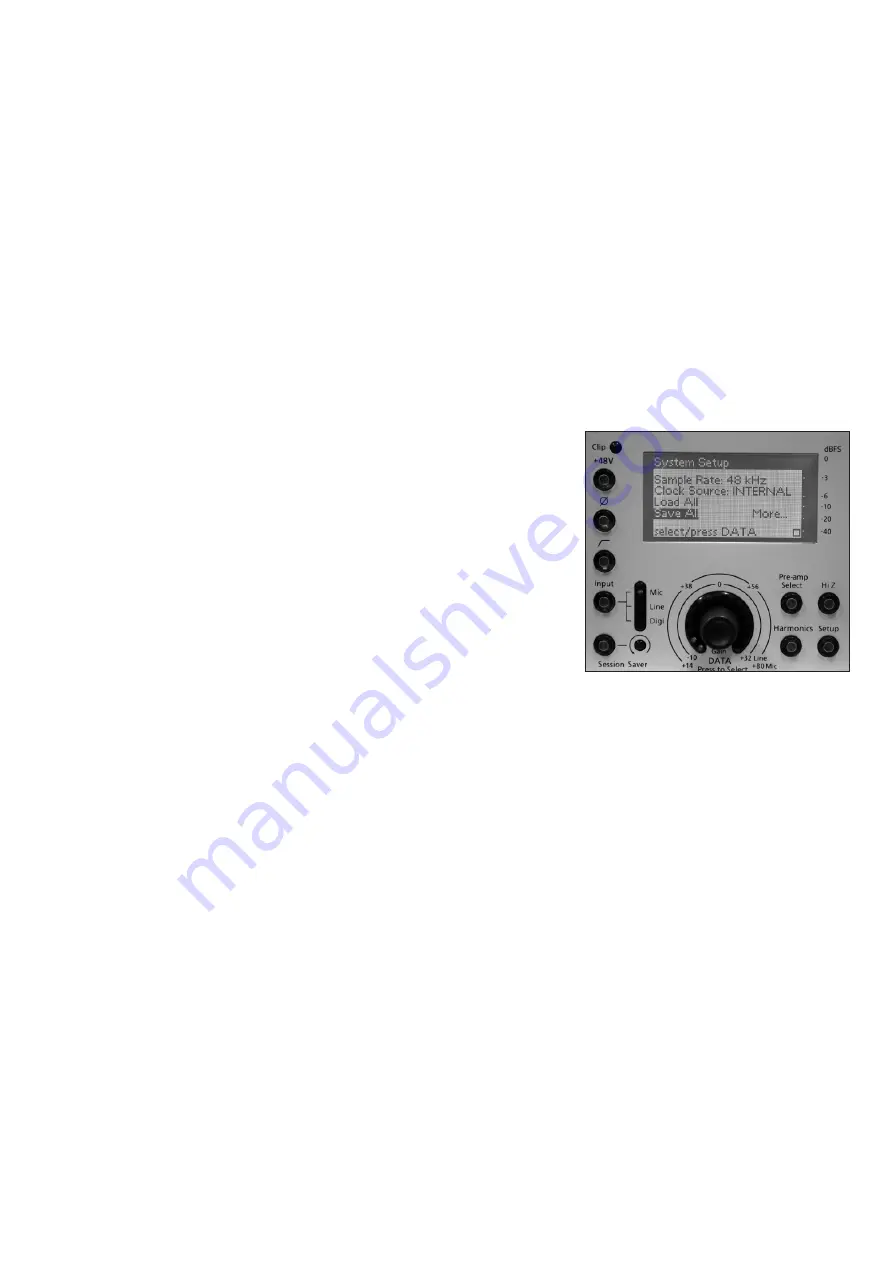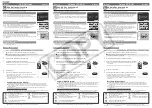
4. Now select the
Load
option and press down on the DATA encoder.
5. Turn the DATA encoder to select a program memory.
Used memory locations are displayed with the program memory name, and the names of the four individual channel
settings which are stored within the program memory.
6. Now press down on the DATA encoder to load the memory. The settings are loaded and the display will show
loaded ok
Note that if you try and load an empty memory location, then the display will report that the memory
couldn’t load
.
Channel Setup Options
This section covers each of the
Channel Setup
options in more detail. We will assume that you are familiar with the basic
operations of setup page navigation, editing and naming. If not, please refer back to the examples on page 14.
Press the
Setup
button on the appropriate channel to change the LCD to
Channel Setup
view. From here, you can access
the following options:
Name (Page 1)
You may give each channel of the Liquid 4PRE™ a name, up to 12 characters
in length. You may want to do this if you are going to link multiple units and
therefore have lots of sources, or you are going to save settings into a
channel memory.
We’ve already covered this operation, so please refer back to page 15 for
details.
Load and Save (Page 1)
These options allow you to load and save up to 99 channel memories. Please refer back to page 16 for details on these
options.
Digi Input (Page 2)
When a channel is switched to Digital input, from the
Input
button, the signal can be taken from any digital input to the
Liquid 4PRE™. This pre-selection is made on a channel-by-channel basis using the
Digi Input
option as follows:
Ether 1
to
Ether 8
– any channel from the optional Ethersound IN connection;
Adat 1
to
Adat 8
– any channel from the ADAT FROM SLAVE connection;
AES Left
or
AES Right
– either channel of the AES INPUT.
Note when the Liquid 4PRE™ operates at normal sample rates (44.1kHz or 48kHz), each of the 8 channels of the
Ethersound card and ADAT connection are available individually. However, when higher sample rates are selected, then
the Ethersound and ADAT channels are grouped to supply double or quadruple sample rates. So, for example, at 96kHz,
you can select
ADAT 1
,
ADAT 2
,
ADAT 3
or
ADAT 4
. At 192kHz, you can select either
ADAT 1
or
ADAT 2
. Note that this
restriction does not apply to the AES input.
21















































